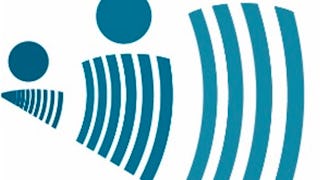We want to provide you some information about our course “Measuring and Modeling Impact in evaluations”. The purpose of this course is to give you a better understanding of different measures of impact that could be used in the evaluation of a program in the areas of maternal and child health and nutrition. For each of the measures presented, we will discuss current sources of data you might draw on as well as describe the methods that can be used to measure these. When we describe the methods, we also try to identify the strengths and weakness of the methods as well as their suitably for use in an evaluation. The course also discusses how modeling can be used in evaluations as either a replacement for measuring impact or to supplement measured impact. The last two lessons in this course focus on giving you an introduction and training on how the Lives Saved Tool (LiST) works and how to use it. This model can be used to estimate most – if not all – of the impact measures we describe in the course and can be an important part of both planning and estimating impact in an evaluation of a large-scale program. While this course is self-contained, it is also linked to other courses on evaluation. We developed this course for public health program managers and evaluators and assume the students in the course will have a background in public health with a focus on maternal and child health in low- and middle-income countries.

Enjoy unlimited growth with a year of Coursera Plus for $199 (regularly $399). Save now.

Measuring and Modeling Impact in Evaluations
This course is part of Evaluating Large-Scale Health Programs Specialization


Instructors: Talata Sawadogo-Lewis
2,230 already enrolled
Included with
(11 reviews)
Recommended experience
Skills you'll gain
Details to know

Add to your LinkedIn profile
7 assignments
See how employees at top companies are mastering in-demand skills

Build your subject-matter expertise
- Learn new concepts from industry experts
- Gain a foundational understanding of a subject or tool
- Develop job-relevant skills with hands-on projects
- Earn a shareable career certificate

There are 7 modules in this course
This module welcomes students to the Measuring and Modeling Impact course presented by faculty from the Johns Hopkins Bloomberg School of Public Health. The module also introduces faculty and provides an overview of impact measures.
What's included
3 videos
This module will first cover a broad set of issues that cut across all types of mortality, including under-five, maternal and neonatal. It then has lessons and readings that focus on understanding maternal mortality, data sources for maternal mortality and approaches to measurement.
What's included
2 videos2 readings1 assignment
This module will introduce you to the major indicators related to deaths among children that could be used as a measure of impact. For each of these indicators we describe common sources of these indicators as well as methods used to measure or model these indicators .
What's included
5 videos2 readings1 assignment
In this model we provide and overview of common impact measures related to nutrition. For each of these indicators we describe common sources and the methods that can be used to collect these indicators in an evaluation.
What's included
3 videos2 readings1 assignment
In this module we review other categories of possible impact measures, including morbidity, long-term consequences of programs and birth outcomes. For each category of additional impact measures we review the major indicators, possible sources of these indicators as well a a quick overview of methods that could be used to collect them.
What's included
3 videos1 reading1 assignment
In this module, we introduce the Lives Saved Tool (LiST) which is a mathematical modeling tool that can be used to model the impact of maternal, newborn, child health and nutrition. We review basic concepts, data sources, and review how the software itself works as well.
What's included
19 videos4 readings1 assignment
In this module, we discuss specific topics in LiST including how nutrition is modelled in LiST, how maternal and child mortality are modelled in LiST, and how subnational modelling is handled in LiST. We conclude by reviewing some additional tools that are relevant to LiST.
What's included
24 videos1 reading2 assignments
Earn a career certificate
Add this credential to your LinkedIn profile, resume, or CV. Share it on social media and in your performance review.
Instructors


Offered by
Explore more from Public Health
 Status: Free Trial
Status: Free TrialJohns Hopkins University
 Status: Free Trial
Status: Free TrialJohns Hopkins University
 Status: Preview
Status: PreviewJohns Hopkins University
 Status: Free Trial
Status: Free TrialJohns Hopkins University
Why people choose Coursera for their career





Open new doors with Coursera Plus
Unlimited access to 10,000+ world-class courses, hands-on projects, and job-ready certificate programs - all included in your subscription
Advance your career with an online degree
Earn a degree from world-class universities - 100% online
Join over 3,400 global companies that choose Coursera for Business
Upskill your employees to excel in the digital economy
Frequently asked questions
To access the course materials, assignments and to earn a Certificate, you will need to purchase the Certificate experience when you enroll in a course. You can try a Free Trial instead, or apply for Financial Aid. The course may offer 'Full Course, No Certificate' instead. This option lets you see all course materials, submit required assessments, and get a final grade. This also means that you will not be able to purchase a Certificate experience.
When you enroll in the course, you get access to all of the courses in the Specialization, and you earn a certificate when you complete the work. Your electronic Certificate will be added to your Accomplishments page - from there, you can print your Certificate or add it to your LinkedIn profile.
Yes. In select learning programs, you can apply for financial aid or a scholarship if you can’t afford the enrollment fee. If fin aid or scholarship is available for your learning program selection, you’ll find a link to apply on the description page.
More questions
Financial aid available,

